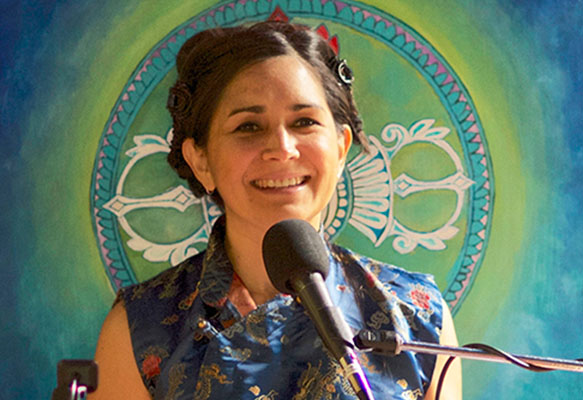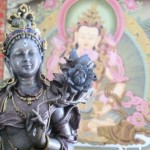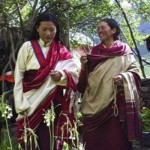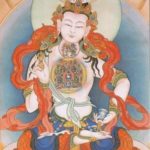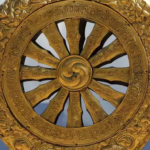Buddhist Women Who Made History
In the Past Lives of the Buddha
In the Buddha’s past life he was a woman, according to several medieval Pali texts.[1] These texts, containing collections of the Buddha’s past life stories, portray how enlightened intention can develop through lifetimes. The stories are known as Jataka tales. They illustrate how altruistic aspiration and heroic conduct led the Buddha, through successive lifetimes, to fully awaken and finally become the person who was the father of Buddhism – and the Buddha of this aeon- Siddhartha Gautama (For his life story see my video series). Containing pithy lessons, these Jataka tales account for the activities of the Buddha, before he was a Buddha, and what it was that led him to become the Buddha over trillions of years and a hundred thousand aeons. In this way they serve as models for ideal attitudes and conduct that lead the individual to awaken and relieve others from suffering. In one of these tales, the Buddha first formulated his aspiration to be fully awakened when he was a female.
When Buddha Was A Woman
Early on in his succession of lives, in the third lifetime, the Buddha was a born a princess who was also the sister of the Buddha of previous aeons, Buddha Former Dipankara. During that life this princess made an offering of white mustard oil to an old monk. She gave this to this monk so that the oil could be used to light butter lamps as an offering for the Buddha of that time. When she made this offering, she also declared an aspiration. She wished that in a future life, for the sake of all sentient beings, that she would become a Buddha. When the monk told the Buddha of that aeon of the princess’s aspiration, he responded with a prediction. He foretold that in the future, she would be told that she would be the Buddha of the next aeon (our present age), the Buddha Gotama, aka Siddhartha Gautama, the founding figure of Buddhism.
The Birth of Enlightened Intentionality
In Buddhism, one’s intention is the defining factor of one’s karma, one’s quality of life and one’s rebirths. Even when the actions we take do not turn out the way we intend them to, if the intention is altruistic, then it is a beneficial action. The cultivation of the highest intention possible is a deliberate practice featured in most Buddhist prayers and rituals. The wish is made not just to be happy, or have a better life, but that oneself and others would reach their highest potential, to be fully awake and to be free from suffering, to actualize buddha-nature. This wish is also known as Bodhichitta, enlightened intentionality and it is the motivation that drives a Buddhist’s life. This story of the Buddha’s lifetime as a female is an important pivotal story in the succession of lives because this it feature’s a woman making the enlightened intention that lays the foundation for the future attainment of Buddhahood.
For a full translation of this story and its commentary, see the fascinating essay by Karen Derris, “My Sister’s Future Buddhahood; A Jataka of the Buddha’s Lifetime As A Woman,” chapter one in Eminent Buddhist Women Edited by Karma Lekshe Tsomo.
[1] This story comes from Karen Derris’s translation and commentary based on the stories appearance in the Sotathakimahanidana (Bangkok: Privately printed, 2526/1983); Mahasampindanidana, unpublished transcription by Venerable Nanavasa; S.P. Buddhadatta, ed., Jinakalamali (London: Pali Text Society, 1962); The Sheaf Garland of the Epochs of the Conqueror, trans. N.A. Jayawickrama (London: Pali Text Society, 1968); P.S. Jaini, ed., Pannasa, 2 vols. (Oxford: Pali Text Society, 1981-1983), and P.S. Jaini, trans., Apocryphal Birth Stories, vol. 2 (London: Pali Text Society, 1986), pp. 396-402).

